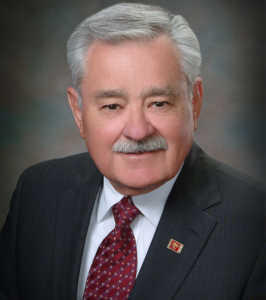500 Years Later, Tejanos Get Rightful Place In Texas History
 By Renato Ramirez, Vice President of the Tejano Monument Board of Directors
By Renato Ramirez, Vice President of the Tejano Monument Board of Directors
Given the more than 500 year history of Tejanos in America, a single decade doesn’t seem like a big deal. Then again, it’s a long time to carry around a 250-ton statue.
That’s virtually what a group of businessmen and educators and I have been doing since we first proposed a Tejano monument on the Texas State Capitol lawn in 2001. Tejanos in this context means people of Spanish or Mexican descent in Texas. Our vision of a 33-foot long diorama, as permanent testimony of the Spanish-Mexican heritage that has influenced and is inherent in present-day U.S. and Texas culture, will be realized this spring with the unveiling of artist Armando Hinojosa’s massive masterpiece in Austin. It’s been a long, often rocky, road.
The idea for the statue was born in 2000 when my compadres realized there wasn’t any positive art in or around the state house commemorating Tejanos in Texas. It was like the first 300 years of Texas history had been erased. The closest anything came to portraying any kind of Mexican heritage was a painting of Santa Anna with a sword at his throat. Even the Mexicans who were killed defending the Alamo were forgotten.
And now, nearly 500 years after the mapping of the Texas coast by Alonzo Alvarez de Pineda in 1519, and 175 years after Tejanos José Francisco Ruiz, José Antonio Navarro and Lorenzo de Zavala signed the Texas Declaration of Independence in 1836, the Tejano culture and its contributions to Texas’ evolution, are being officially recognized by the state.
The Tejano monument was “born” in June 2001 when Texas Governor Rick Perry signed HCR-38 authorizing, but not funding, the statue’s creation. The 79th Texas Legislature approved an appropriations rider in 2005 but the funds were never realized. Finally, in 2007, the 80th Legislature approved $1.087 million, approximately half of the $1.8 million price tag for the monument’s creation. We’ve managed to raise another $800,000 in private donations since then. Construction costs are covered. We now need funds for the unveiling ceremony.
Armando Hinojosa, the Laredo, artist best known for his life-sized works, started sculpting the first of the seven statues that will be a part of the monument before his first grandchild was born. That child is now seven.
“I was glad to get the commission,” Hinojosa says. “I’m not sure the enormity of it has actually hit me yet. To me, the sculpture doesn’t have anything to do with politics. It represents the history of Texas. By the time of the Alamo there were a lot of people here from different countries but the area was still part of Mexico. This is the biggest project of my life and I’m working hard to make it the best. I just want it to be right. I want it to be accurate.”
The statues are mounted on an enormous Texas-native granite base and are accompanied by bronze plaques explaining the seven figures’ significance in Texas history.
The characters are a Spanish explorer, representing the discovery of Coahuila y Tejas which was the basic outline for what is today Texas; a mustang-riding vaquero and two longhorns, indicative of the importance of early ranching to the economy of the state; a Mexican mother and father with their infant child, early settlers who brought agriculture to the wild land; a young boy with a goat, symbolizing the value of dairy animals and farming; and a little girl collecting water, the lifeblood of Texas.
I’m proud to be part of the creation of this magnificent statue which portrays the proud heritage of the millions of descendants of these early settlers. This monument, and its message of cultural diversity and pride, not only depicts Texas history, it is Texas history – true history, not written by the winners, but by the people, Tejanos and others, who made, and continue to make Texas and the United States thriving, colorful communities.
We want little Tejanitos, when they go to Austin, to see something they can be proud of. This is what we did. That’s the ultimate objective all of us have. To learn more about the Tejano Monument or to make a donation to its completion and upkeep, visit www.tejanomonument.com.
Renato Ramirez is Vice President of the Tejano Monument Board of Directors and CEO of IBC Bank – Zapata, TX.

